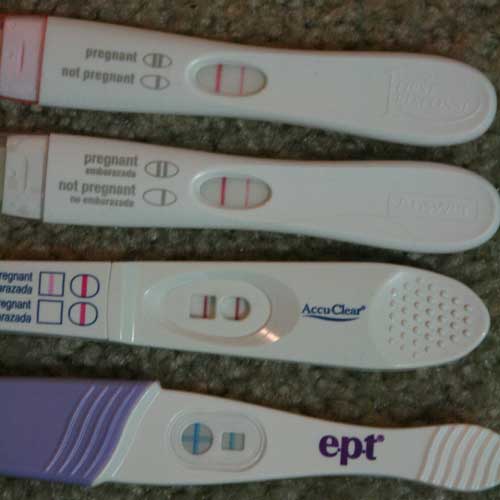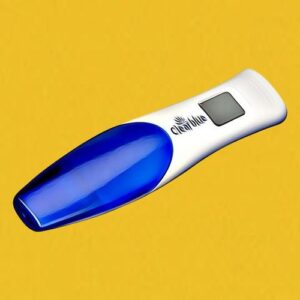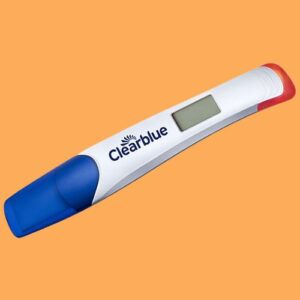How the Pregnancy Test Began
To some people, the news that they are going to be a mum is welcomed with a lot of joy. To others, it can be a source of anxiety especially when they hadn’t planned for it. Either way, a pregnancy test is one of the tensest moments in a woman’s life and it can be tough surviving the two week wait to find out if you are pregnant.
Nowadays, the process is as simple as peeing on a stick, but have you ever wondered how and when pregnancy testing started? The history of the pregnancy test is certainly a fascinating one.
Did you know that as early as 1300 BC, the ancient Egyptians carried out pregnancy testing? There is a papyrus described test whereby a woman was supposed to urinate on wheat and barley seeds for several days. The Egyptians believed that if the Barley seeds grew, it was a male child and that if wheat grew, it was a female child. If none of the plants grew, there was no pregnancy. Scientists conducted a study in 1970 in an attempt to approve or refute the theory and it was found to be correct 70 percent of the time.
The Middle Ages
During the middle ages, most people used visual aspects of the urine to test for pregnancy. In the fourteenth century, the major pregnancy tests givers were the piss prophets who claimed that they could diagnose any medical condition by just looking at the colour of urine. There were also tests that involved mixing urine with wine. These tests have proved to have some substance — because alcohol does react with certain proteins in urine to elicit particular results.
The 19th Century
This is the period when the biggest steps were taken with regards to unravelling the way the body functions during pregnancy. Towards the end of the century, scientists asserted that the body had chemical messengers that controlled all the functions of the body. These were called hormones. During this time, the only early pregnancy test women had were symptoms such as morning sickness.
The Period Between 1900 and 1970
Studies into the concept of hormones intensified. Doctors were able to identify and isolate one hormone that was very active during pregnancy. They called this progesterone. A test was developed in 1927. It was supposed to detect the presence of a pregnancy by detecting the presence of hCG or progesterone in the urine. In this test, the urine of a woman would be injected into a rat, if the rat showed signs of being on heat; the test was concluded as positive. On the other hand, if the rat did not change its behaviour, the pregnancy tests were concluded to be negative.
1970 to the Present
Studies about hormones intensified during this period. This was due to the fact that abortion had been legalised and both women and doctors wanted to detect a pregnancy as early as possible.
In 1976, US firm Warner-Chilcott sought FDA approval for e.p.t, the “Early Pregnancy Test”. This test was later renamed the “Error Proof Test.” FDA approval was forthcoming and e.p.t went on to become the first home pregnancy test kit for sale to the general public in the United States.
The First Digital Pregnancy Test
In 2003, Clearblue released the first digital pregnancy test to show the pregnancy test result with the words ‘Pregnant’ or ‘Not Pregnant’ on a display, replacing the traditional blue line. in 2008 the same company release the Clearblue Digital Pregnancy Test with Weeks Estimator. For women this was a major breakthrough as this was the first pregnancy test that showed the time since ovulation occurred (between 1 and 3 weeks) as well as the “pregnant” or “not pregnant” result.
The Surprising Secret Hidden in a Pregnancy Test
In 2020, a hardware researcher named Foone decided to find out what was inside a digital pregnancy test. This little task was initiated in reply to a tweet from a man who asked whether the digital pregnancy test his wife had purchased was worth the extra money. The BBC picked up on this social media exchange in a story published under the title The Surprising Secret Hidden in a Pregnancy Test.
Foone found that by breaking down the digital test into its raw components, it was actually not much different to a traditional pregnancy test as it used a paper test strip to detect a hormone called human chorionic gonadotropin. This hormone is produced by a woman during pregnancy. The test strip is coated with a chemical that changes colour when the hormone is present.
The researcher decided that digital tests were “probably not worth the money” — a very controversial verdict!
Certainly, many people swear by the cheaper pregnancy tests and see no reason to spend money on expensive brand names. On this blog we have looked at this issue a number of times and asked are cheap pregnancy tests reliable? Often they are!
Pregnancy Tests in 2024
As you can see, the concept of pregnancy tests has really come a long way. Starting from the time when a woman had to urinate on seeds to the present where you can get a verdict sitting in your bathroom, it is safe to say that this is one technology that has grown and developed very well.
Certainly it now easier and cheaper than ever to get a pregnancy test done. In the old days, you could only get a test done by going to visit your local GP or on prescription. Nowadays, you can buy tests anywhere — supermarkets such as Sainsbury’s and Asda offer cheap tests that you can pick up with your shopping. High street pharmacies such as Boots, Superdrug or Lloyds offer their own brand of tests at similar prices to the supermarkets. Or you can buy from a specialist website such as Zoom Baby, where cheap prices are matched by high quality tests and expert advice.
Regardless of where you buy your test, we are at a stage now where home pregnancy tests are nearly 100% accurate.
The Future of Pregnancy Testing
As technology continues to advance, we’re likely to see even more innovations in pregnancy testing. Some exciting possibilities on the horizon include:
- Smartphone-connected tests that sync results to your health apps
- Wearable devices that can detect pregnancy hormones through your skin
- AI-powered analysis of hormone levels to predict fertility windows with greater accuracy
- Non-invasive tests that can detect pregnancy earlier than current methods
These developments could make pregnancy detection faster, more convenient, and potentially more accurate. However, they also raise ethical questions about data privacy and the potential for misuse of this sensitive information.
While high-tech options emerge, there’s still value in traditional testing methods. Many women appreciate the simplicity and privacy of home pregnancy tests. The future may offer a mix of cutting-edge and time-tested options, giving women more choices than ever before.
What do you think about these potential advancements? Are you excited about the possibilities, or do you prefer the tried-and-true methods? Remember, no matter how technology evolves, the emotional impact of that life-changing moment will always remain deeply personal.
At zoombaby.co.uk, we have the UK’s best selection of fertility and pre-conception products — including our famous pregnancy and ovulation tests. All orders are posted out on the day we receive them, packaged discreetly to maintain your privacy. Give us a try when you are trying to conceive!
Photo Credit: “Good News!” (CC BY-SA 2.0) by jhayworth
This post first appeared in 2013. It was last updated in July 2024.
Zoom Baby is a leading supplier of Pregnancy Tests and Ovulation Test Kits





